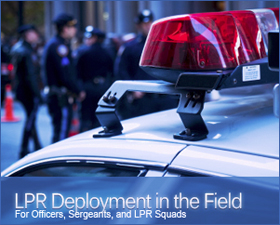LPR Deployment in the Field
An evidence-based approach to LPR deployment means that officers and units should use LPR in ways that reflect what we know about “what works” in preventing crime and maintaining community legitimacy. These are not “best guesses” based on hunches or even anecdotal experience. Rather, evidence-based tactics and strategies are based on rigorous field research that tests for effectiveness.
Given what we know about effective patrol strategies and tactics, optimizing the crime prevention effects of LPR would require:
- Using LPRs to support existing tactics and strategies known to be effective in reducing, preventing and detecting crime. Effective strategies include those that are place-based, proactive, and tailored/problem-oriented. Mores information on effective policing strategies can be found in the Evidence-Based Policing Matrix.
- In patrol, LPRs should be placed where they can potentially have the most impact for crime prevention and detection, in those specific places, or “hot spots” of crime, auto-theft and traffic-related concerns.
- Patrol officers using LPR units should also consider staying in hot spots for 30 minutes or less, following the Koper curve principle, which suggests that officers are more effective in deterring criminal activity when they patrol in focused areas for relatively brief time periods.
- Tailoring your approach to the specific type of area and type of data that you have to work with. See Chapter 3 of the Final Report for more detail, as well as the patrol tips offered on the left side of this page.
- For investigations: The LPR research team at GMU is currently assessing ways in which LPR might have the greatest impact on police investigations.
- What is LPR?
- 2016 LPR National Survey Report
- Officer to officer tips on using LPR
- Tips from Supervisors
- Community transparency and legitimacy
Webinars on considerations for LPR use:
- The Alexandria Experience, Optimizing the use of LPR
- Charlotte-Mecklenberg Police Department’s LPR SOP
Other information for officers and supervisors:
• What is evidence-based policing?
• The Crucial Question for Crime: Not Who Done it, but Where Done It? Lecture by David Weisburd – Video
• Where can I find other tactics and strategies for fighting crime?
• How can police use scientific research in practice?
• Ideas for problem-oriented policing
• Learn more about place based crime prevention
• Contact the research team

